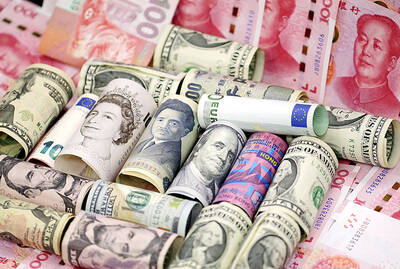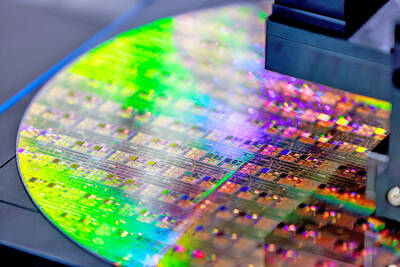Intel Corp, one of the world’s largest makers of computer components, is planning to sell part of its venture capital unit, assets that could be worth as much as US$1 billion, according to people familiar with the matter.
The Santa Clara, California-based company is working with UBS Group AG to look for potential buyers for the assets, said the people, who asked not to be identified because the information is private.
The portfolio, which is made up of firms across the world, is housed within Intel’s corporate venture unit, Intel Capital, the people said.
Intel restructured its venture capital unit in January with president Arvind Sodhani’s retirement after 35 years with the company. He was replaced by head of mergers and acquisitions Wendell Brooks.
The combination of the teams was designed to unify investment decisions across the firm, Intel said in a statement.
Discussions over the structure of the sale are at an early stage, with Intel open to selling the assets as a whole or divided by geography or sector focus, the people said.
The sale is expected to attract private equity houses that specialize in buying portfolios, known as secondaries firms.
Since its start in 1991, Intel Capital has invested about US$11.6 billion in more than 1,440 companies in 57 countries across a range of sectors including security, wearable technology and digital media, according to the company’s Web site.
Last year, the unit invested US$514 million in 143 companies, split almost evenly between new ventures and follow-on investments.
A spokeswoman for UBS declined to comment. Intel Capital’s Brooks declined to comment.

Taiwan’s foreign exchange reserves hit a record high at the end of last month, surpassing the US$600 billion mark for the first time, the central bank said yesterday. Last month, the country’s foreign exchange reserves rose US$5.51 billion from a month earlier to reach US$602.94 billion due to an increase in returns from the central bank’s portfolio management, the movement of other foreign currencies in the portfolio against the US dollar and the bank’s efforts to smooth the volatility of the New Taiwan dollar. Department of Foreign Exchange Director-General Eugene Tsai (蔡炯民)said a rate cut cycle launched by the US Federal Reserve

The US government on Wednesday sanctioned more than two dozen companies in China, Turkey and the United Arab Emirates, including offshoots of a US chip firm, accusing the businesses of providing illicit support to Iran’s military or proxies. The US Department of Commerce included two subsidiaries of US-based chip distributor Arrow Electronics Inc (艾睿電子) on its so-called entity list published on the federal register for facilitating purchases by Iran’s proxies of US tech. Arrow spokesman John Hourigan said that the subsidiaries have been operating in full compliance with US export control regulations and his company is discussing with the US Bureau of

Businesses across the global semiconductor supply chain are bracing themselves for disruptions from an escalating trade war, after China imposed curbs on rare earth mineral exports and the US responded with additional tariffs and restrictions on software sales to the Asian nation. China’s restrictions, the most targeted move yet to limit supplies of rare earth materials, represent the first major attempt by Beijing to exercise long-arm jurisdiction over foreign companies to target the semiconductor industry, threatening to stall the chips powering the artificial intelligence (AI) boom. They prompted US President Donald Trump on Friday to announce that he would impose an additional

Pegatron Corp (和碩), a key assembler of Apple Inc’s iPhones, on Thursday reported a 12.3 percent year-on-year decline in revenue for last quarter to NT$257.86 billion (US$8.44 billion), but it expects revenue to improve in the second half on traditional holiday demand. The fourth quarter is usually the peak season for its communications products, a company official said on condition of anonymity. As Apple released its new iPhone 17 series early last month, sales in the communications segment rose sequentially last month, the official said. Shipments to Apple have been stable and in line with earlier expectations, they said. Pegatron shipped 2.4 million notebook